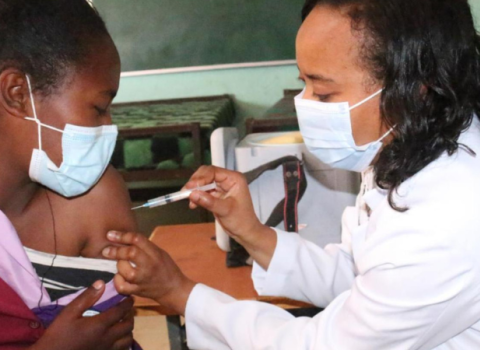
Malignant glioma
Ark Therapeutics Group looks likely to win the race to be the first company outside China with an approved gene therapy product, after the European regulator accepted Cerepro, for treating malignant glioma (brain tumours) for review at the end of October.
A week earlier, in another first for the gene therapy, the UK company was given approval for its facility in Kuopio, Finland, to manufacture the product for commercial supply.
The only registered gene therapy is Gendicine, developed by SiBiona GeneTech of Shenzhen, China, which was approved in October 2003 for the treatment of head and neck cancer. In September 2005 Human Gene Therapy carried a summary of the clinical data submitted to secure approval, the first time that this information had appeared in a peer-reviewed English language journal.
Nigel Parker, CEO of Ark, based in London, is slightly bemused to find himself in the position of leading not only Europe, but also the US. "We’re delighted really, though it is in some ways surprising to find little Ark is in this position.
"If you had asked us four years ago – when you look at all the money going into this field in the US – if Ark would be the first, we would not have thought it likely."
Cerepro was filed with EMEA, the European medicines regulatory authority, under an "exceptional approval" route. This route will not expedite the review process, which is expected to take between 10 and 14 months, but has allowed the company to file before completing a Phase III trial involving 250 patients. Parker anticipates that approval will to market Cerepro by the end of 2006.
Over-hyped
What is gene therapy?
Gene therapy involves administering DNA sequences encoding a specific gene with the aim of treating or curing disease. Initial trials in gene therapy focused on delivering a normal copy of a missing or defective gene, but the field has broadened to include delivering genes that destroy cancer cells directly, or initiate the production of an enzyme that can turn a prodrug into a toxic form, delivering viral or bacterial genes as vaccines, delivering genes to promote the growth of new tissue, delivering genes to restore functionality in degenerative diseases.
This broadening of the field draws on new understanding about the function of specific genes, and in new ways of delivering them to their target cells. The most common delivery systems are viral vectors that take advantage of a virus’s ability to enter a cell. These vectors are genetically engineered so that they are not able to replicate once they are inside the cell. There are a number of synthetic vectors in development also, in particular based on lipids that can be incorporated into the cell wall and thus deliver their cargo.
In addition to choosing the right gene and finding the appropriate vector, the delivered gene then has to be turned on by a promoter, resulting in the desired protein being expressed in the cell.
This results in some very sophisticated constructs, as the example of Cerepro demonstrates. Cerepro uses an adenovirus to deliver the gene for the enzyme thymidine kinase, which converts the prodrug ganciclovir into a form that is toxic to dividing cells. The product is injected into healthy tissue after surgery to remove a tumour, and subsequently ganciclovir is administered intravenously. Unlike tumour cells, healthy brain cells (neurons) are not dividing, and so are unaffected.
The product has been in three clinical trials, a Phase I study to demonstrate safety and access the correct dose, and two Phase II safety and efficacy studies. In the Phase IIb trial of Cerepro, involving 36 patients, there was an 81 per cent increase in mean survival time from 39 weeks to 71 weeks, compared to standard care.
But he acknowledges that companies in the field are partly to blame. Parker admits freely that he is a culprit, too. And with so much negative publicity about gene therapy, Ark has adopted the synonym "DNA medicines" to describe its products. But now the Cerepro file has been accepted for review the words gene therapy is back in the lexicon. "The world must start to understand: this is a hell of an announcement," he says.
Gene therapy was pioneered in the US in 1990 when two girls with severe combined immune deficiency disease (SCID) recovered after the gene for adenosine deaminase, the enzyme they were unable to generate naturally, was administered.
Within five years of this success, over 100 gene therapy trials were approved in the US. Then disaster struck. In September 1999, 18-year-old Jesse Gelsinger, a patient at the University of Pennsylvania’s Institute of Human Gene Therapy in Philadelphia, died after a gene therapy treatment. In the investigation that followed allegations were made of deaths in other gene therapy trials, and a number of studies were suspended by the FDA, the US regulator.
Fall from grace
Inevitably, this kick started gene therapy's fall from grace, and the impact was compounded when it was later argued that it was direct administration of the missing enzyme, rather than its internal production courtesy of the introduced gene, that had prompted the immune systems of the two girls to recover.
That left French scientists to claim the first successful gene therapy for a related immune disorder, X-SCID. The treatment, pioneered at the Necker-Enfants Malades Hospital in Paris, involves removing marrow cells from the patient and using a virus to deliver the missing gene, before re-introducing the marrow cells to the patients. Between 1999 and 2002 clinicians treated 10 boys. Without treatment, babies with X-SCID rarely live beyond their first birthday, but all survived and developed a functioning immune system.
However, two later developed leukaemia, and in 2002 this trial and others in the US and elsewhere were put on hold. Following a review, the UK Gene Therapy Advisory Committee allowed a trial at the Great Ormond Street Hospital in London to continue on the grounds that leukaemia was a known risk and it would be wrong to stop the trial as the babies would die without treatment.
The Necker-Enfants' trial restated with a different protocol, but was halted again in February this year after a third child developed complications.
Scaling up
The treatment of the X-SCID children proved that gene therapy could work. While these high profile cases were grabbing the headlines, work has continued in the background to overcome safety issues and develop scalable products. In the past decade gene therapy has moved from an academic pursuit into established commercial development and there are diverse products in clinical trials.
According to figures complied by the Journal of Gene Medicine, 1076 gene therapy clinical trials are in progress currently. Of these, 20 have reached Phase III and 12 Phase II/III, indicating thatproducts are getting closer to the market.
Of the trials, 721 are in the US, 304 in Europe and 22 in Asia. In Europe, 123 of the trials are taking place in the UK, 71 in Germany, 39 in Switzerland and 18 in each of France and Belgium. The journal has a database of individual trials showing their status at www.wiley.co.uk/genetherapy.
The gene therapy paradigm has evolved since 1990, when the concept of using introduced genes to replace ones that are defective or missing was pioneered. Products in development are delivering a range of genes with a range of therapeutic objectives. For example, delivering antigen genes to evoke an immune reaction as in vaccination, or genes for enzymes that activate harmless prodrugs to become active, toxic forms in situ, or viral genes that cause cancer cells to self-destruct, genes that promote the growth of new tissue or prompt damaged tissue to regenerate.
The field of gene therapy has expanded to encompass the area of RNA interference, where the aim is turn off, or silence, a gene that is causing disease, or turn a gene up, amplifying its effects. Other constructs in development include antisense oligonucleotides and the weirdly named zinc finger proteins, both of which aim to silence undesirable genes.
The big diseases
This evolution of the technology means that treating inherited gene defects is no longer the leading objective. Of the 1076 gene therapy trials in progress worldwide 715 are aimed at cancer, 92 at vascular diseases and 72 at infectious diseases. Inherited single gene defects account for 95 current trials.
The diversity of gene therapy treatments in development was showcased at the European Society of Gene Therapy's annual conference held in Prague at the beginning of this month. The research presented included approaches to treating incurable diseases such as muscular dystrophy and Huntingdon’s disease, vaccines against AIDS and approaches to treating cancer where current treatments have little impact such as pancreatic cancer, and to go back to the Ark example, malignant brain tumours.
As in the case of Cerepro, gene therapy is starting to offer large clinical benefits with good safety profiles in diseases that have hitherto proved difficult to treat. To give Nigel Parker the last word, "I think the world must start to understand that gene therapy has come of age."





 A unique international forum for public research organisations and companies to connect their external engagement with strategic interests around their R&D system.
A unique international forum for public research organisations and companies to connect their external engagement with strategic interests around their R&D system.